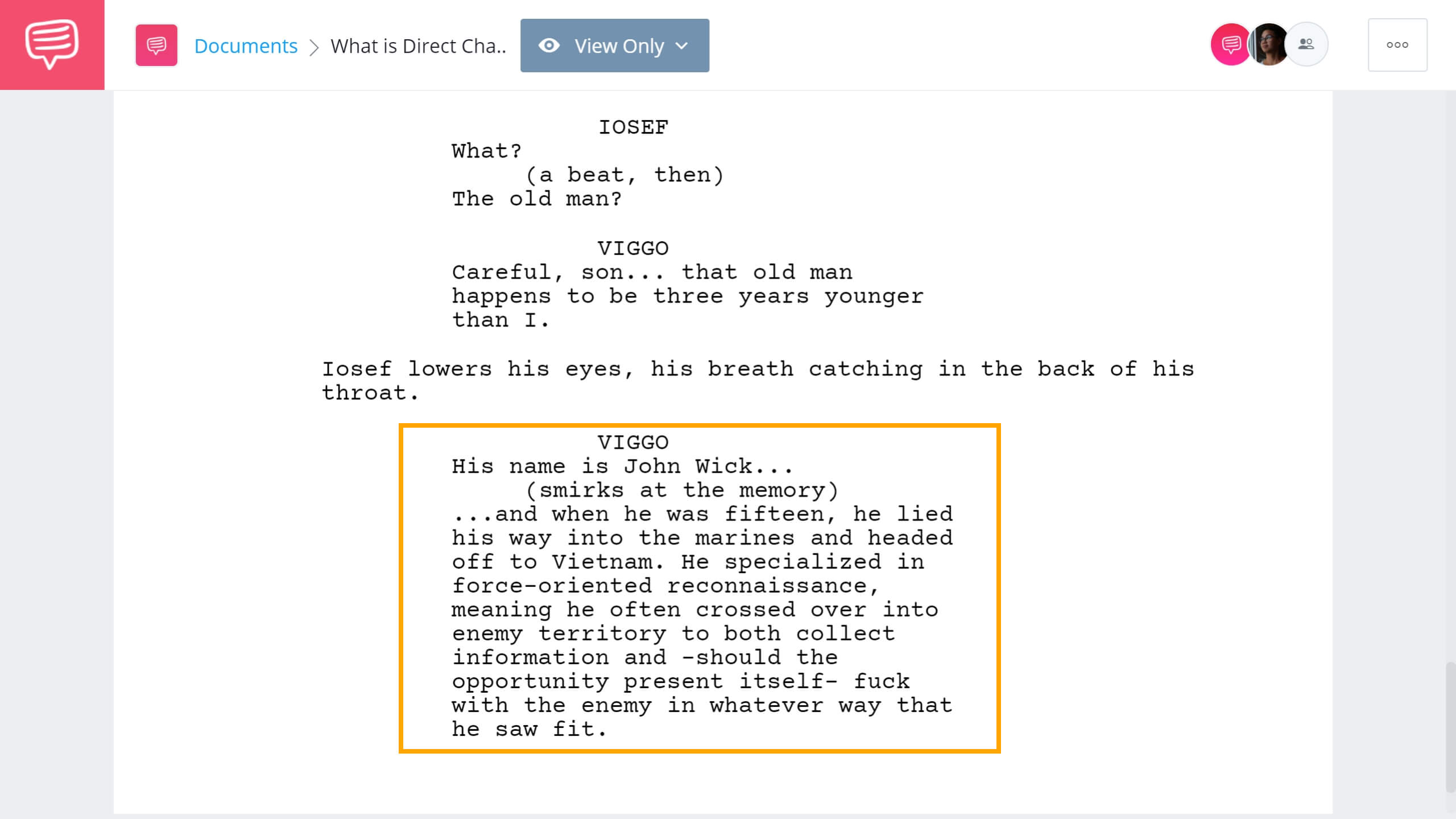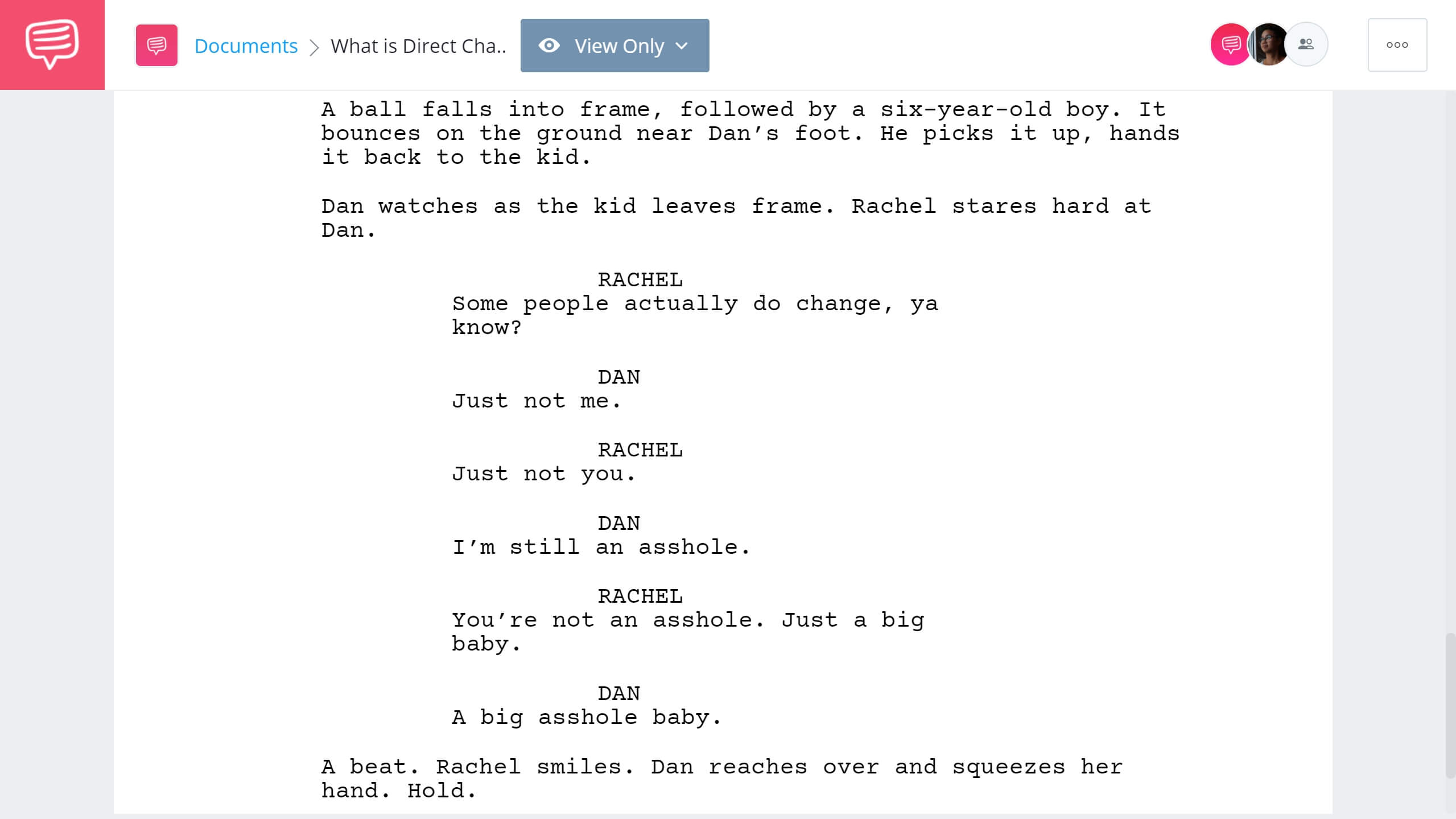Characterization is simply “what makes a character a character.” But under the umbrella of characterization, there are two subtypes: direct characterization and indirect characterization. We’re going to break down direct characterization by looking at examples from John Wick, The Grapes of Wrath, and more. By the end, you’ll know how to implement direct characterization in your own works.
What is Direct Characterization?
Dynamic vs. static characters
Before we jump into our direct characterization definition, let’s quickly go over the difference between dynamic and static characters. The characterization required for each of these character types varies quite a bit.
Dynamic and static characters are both important character types for writing well-rounded suites or ensembles.
Dynamic characters are defined by how they change over time. Here’s a famous example:
Anakin Skywalker/Darth Vader in Star Wars: Anakin is characterized by light/dark symbolism in costuming, red vs. blue color symbolism in props – and through the expectations of prophecies foretold by the Jedi.
Anakin Skywalker is a perfect example of a dynamic character because everything from his physique to his personality changes over time. Conversely, static characters are defined by how they stay the same over time.
Sherlock Holmes in Sir Arthur Conan Doyle’s stories: Sherlock is characterized by specific, unchanging habits, such as stimulatory drug use and antisocial behavior.
Of course, no character is 100% static – but Sherlock Holmes is widely regarded as the de facto static character because he’s "mostly" characterized in a static way. By this, Sir Arthur Conan Doyle often made a point to emphasize how little Sherlock is changed by the world around him. But still, one could argue Sherlock’s stimulatory drug use and antisocial behavior were diminished over time by Watson.
With that distinction out of the way, let’s formally define direct characterization.
DIRECT CHARACTERIZATION DEFINITION
What is direct characterization?
Direct characterization is “surface level” characterization. It’s simply the overt information we’re given about a character, such as “what they look like, what their job is, and what they appear as to others.” Many literary scholars describe this types of characterization as “what we’re told about a character.”
The Meaning of Direct Characterization
Direct vs indirect characterization
What is the difference between direct and indirect characterization? Well, the direct vs indirect characterization debate is often defined by the former telling and the latter showing.
As such, direct characterization plays an important role in dialogue.
We imported the John Wick script into StudioBinder’s screenwriting software to see how the title character is characterized by how others perceive him. As you’re reading, think about how this example of direct characterization imparts a sense of importance to John’s character.
Direct Characterization in John Wick • Read Full Scene
Related Posts
Here, we’re simply told who John Wick is through the perspective of another character. We learn surface-level information about him, such as “when he was fifteen, he lied his way into the marines” and “he specialized in force-oriented reconnaissance.” This is an example of the direct form of characterization because it’s a plain-language description of a character.
Want to see the scene in action? Check out the video below.
What is Direct Characterization in John Wick?
It’s always a good idea to build a character up – especially the protagonist – through dialogue; screenwriter Derek Kolstad did a phenomenal job of doing this throughout John Wick.
Related Posts
Direct and Indirect Characterization Explained
Direct characterization with descriptions
We see direct characterization most often used in character descriptions.
Here’s an example from the third person point of view in John Steinbeck’s The Grapes of Wrath.
“He was not over thirty. His eyes were very dark brown and there was a hint of brown pigment in his eyeballs. His cheek-bones were high and wide, and strong deep lines cut down his cheeks, in curves besides his mouth.”
This example is about as clear as we can get; it’s strictly a physical description of a character told in a clear and concise way.
This next example from Fyodor Dostoevsky’s Notes from Underground is a bit less clear. Re-read it a few times and think about how the first person point of view may muddy the meaning of direct characterization.
“I've never been a coward at heart, although I've always been a coward in action.”
Here, the narrator tells us that he’s “never been a coward at heart… but always a coward in action.” This is a great example because it’s literal. He is simply telling us about his character from his point of view, which is no different than if a third person narrator was doing it.
Whats Direct Characterization Used For?
Function of direct characterization
The function of this type of characterization is to tell the audience about a character in plain language. It may be helpful to think of direct characterization as the “tell” in “show, don’t tell.” Of course, “showing,” or indirect characterization, usually results in more nuance – but there’s a time and place for direct characterization too.
Remember how we outlined dynamic and static characters earlier? Well, the direct method of characterization plays an important role in dynamic and static characters; especially static characters. Throughout most stories, we’re introduced to a lot of characters, many of whom are static.
Direct characterization can help us visualize characters, especially if they don’t change over time.
Ryan Fleck and Anna Boden’s Half Nelson screenplay is chock-full of great characterization. Read through the scene below and think about how the use of irony transforms direct into indirect characterization.
Characterization in Half Nelson • Read Full Scene
Here, the function of direct characterization serves to comment on the central theme of the story, which is: “history = change over time.” Dan, the protagonist of the story, says he doesn’t change – but we know that isn’t true. Thus, this simple example boasts ironic weight.
Consider adding irony to your screenplay to give your characterization more nuance. It’s still direct characterization because it’s a description told in plain language – but it’s subversive nonetheless.
Related Posts
UP NEXT
How to Write the Best Character Arc
Ready to develop your character beyond simple characterization? Check out our next article where we break down how to write a great character arc, with examples from Indiana Jones, The Godfather, and more. You’ll be able to download a free story speedometer too!


